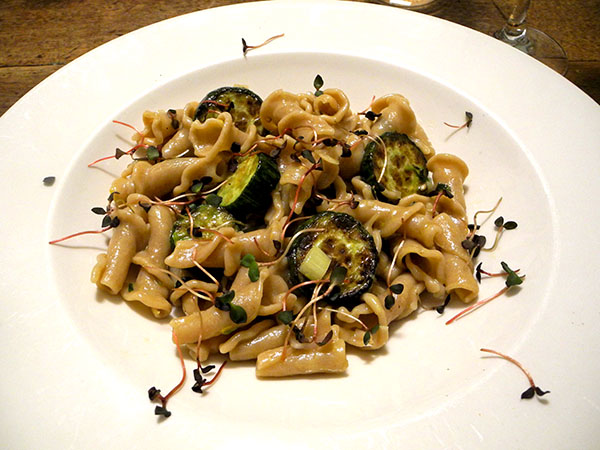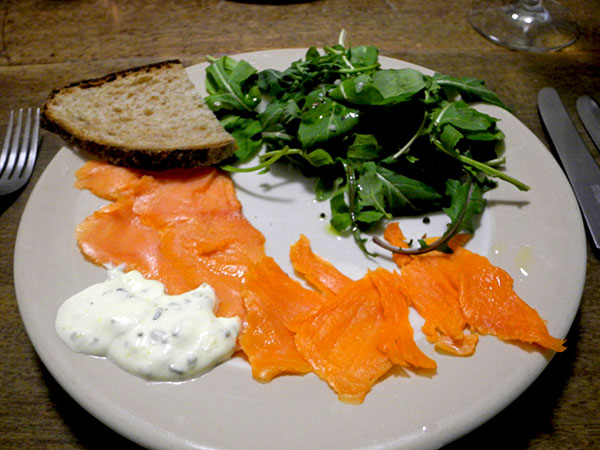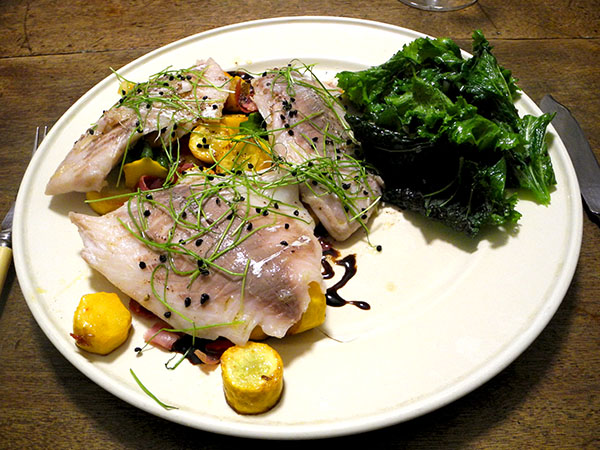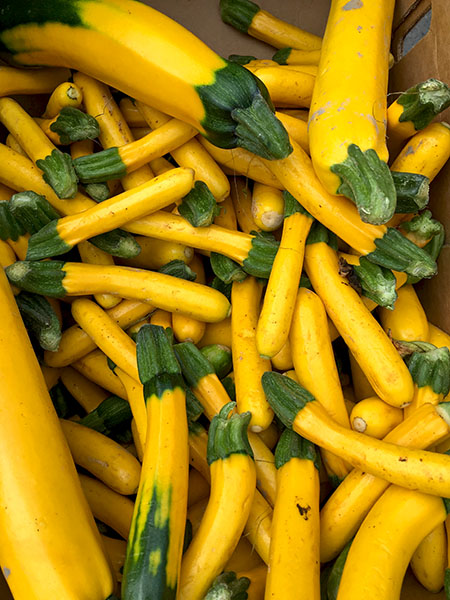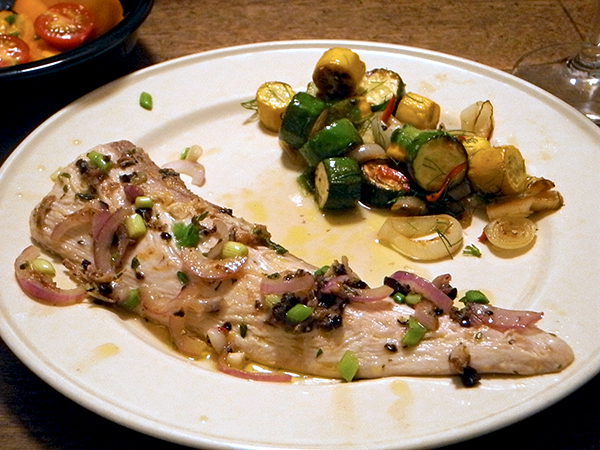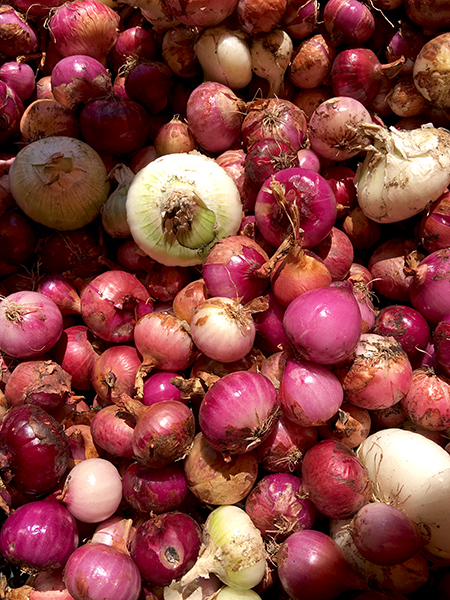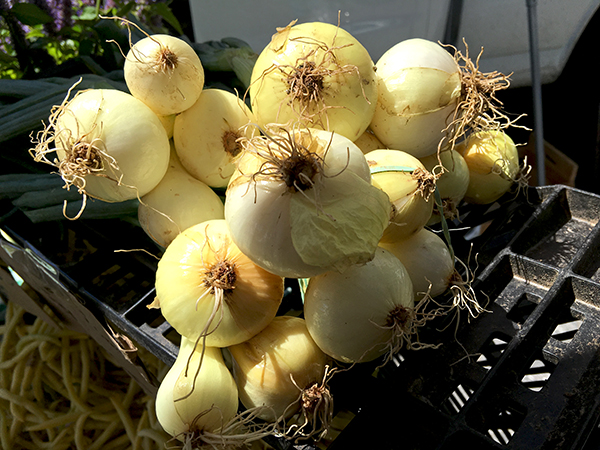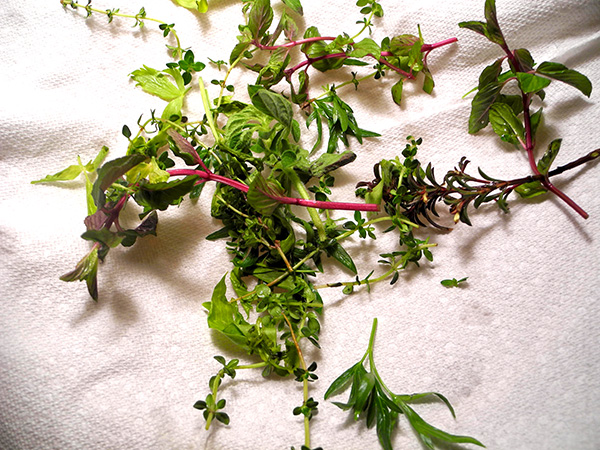
It’s not really much “like lobster”, as some would have it, but it is a sweet fish, in more than one sense.
I’ve written a bit about tilefish in an earlier post.
It’s difficult to imagine that it was once included within that hoary commercial seafood classification, ‘trash fish’, along with, among others species I would now consider delicacies, like sea robin, dogfish, and even redfish, hake, and porgy.
These 2 fillets were my first choice at the fishmongers’ on Friday.
I was reluctant to turn on the oven on a very warm night, and I didn’t want to use any of the preparations that are my usual alternatives to roasting. I looked around on line and found this simple and very delicious recipe, making only a few alterations.
The polenta included in the photograph accompanying the recipe would have been very nice, but I had some vegetables to bring out last night.
They were: some very deep green and very fresh okra, the very last little basket at the stand where I found it (also, the only okra I saw that day and the only okra I’ve seen so far this year); and a small amount of beautiful rainbow chard that I had washed and rinsed 2 days earlier, before realizing I had more than enough for that night’s meal.

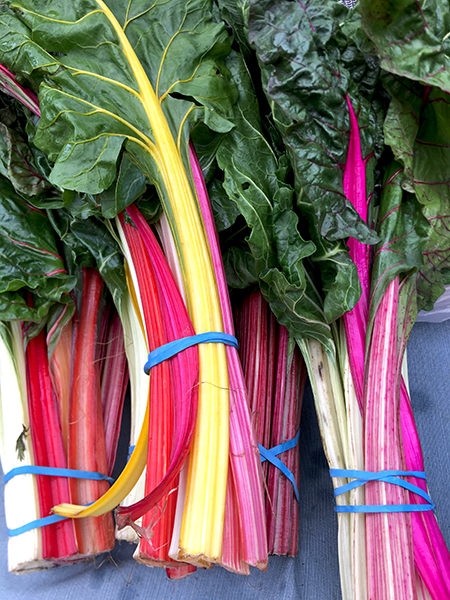
I also had some slightly eccentric additions I wanted to add to the tilefish: the last of the garlic flowers I had enjoyed scattering on top of so many things for at least a whole week; and a package of near-micro nasturtium leaves I had picked up that day.
- two 9-ounce tilefish fillets from Pure Vida Seafood, washed, rinsed, patted dry, sprinkled lightly with sea salt and freshly-ground Tellicherry pepper and set aside; 2 tablespoons of butter and part of one small dried dried peperoncino Calabresi secchi from Buon Italia heated over medium heat and one whole garlic clove from Norwich Meadows Farm allowed to roast in the warm butter for a few minutes, until it started to color (I found the butter beginning to color just before the garlic did, but that didn’t present a problem) and then removed, the tilefish fillets added to the pan flesh side down and cooked, still over medium heat, for maybe 2 minutes, allowing them to also brown, after which they were flipped over and 2 tablespoons of chopped spring shallots from Alewife Farm were tossed in, the butter mixture spooned over the fish (I usually find it easier to use a silicone basting brush), after which the pan was covered with aluminum foil for about 2 minutes and removed, the juices once again spooned or brushed over the the fillets until they had browned and been cooked through (perhaps for another 2 minutes), when they were removed to the plates, sprinkled with lemon zest (of an Organic lemon from Whole Foods Market) and a little lemon juice, a bit of garlic flowers scattered on top, chopped lightly, and some rather small nasturtium leaves from Two Guys from Woodbridge draped across the middle of the fillets
- okra from Oak Grove Plantation, sautéed over a high flame in a large enameled cast iron pan with a little olive oil, seasoned with sea salt
- a portion of a bunch of rainbow chard from Echo Creek Farm, the larger part of which had already been made a part of this meal 2 days earlier, wilted in a little olive oil in which 2 halved garlic cloves from Norwich Meadows Farm had been heated, then seasoned with sea salt and freshly-ground Tellicherry pepper and drizzled with a little olive oil, served in small oval bowls to the side of the plates
- the wine was an Italian (Campania) white, Terredora Falanghina 2016, from Garnet Wines
- the music was the album, ‘Musick For Severall Friends’, a compendium of seventeenth-century English music by the composers John Wilson, Christopher Simpson, Johann Schop, Henry Butler, and Matthew Locke, with Mary Springfels directing the Newberry Consort
